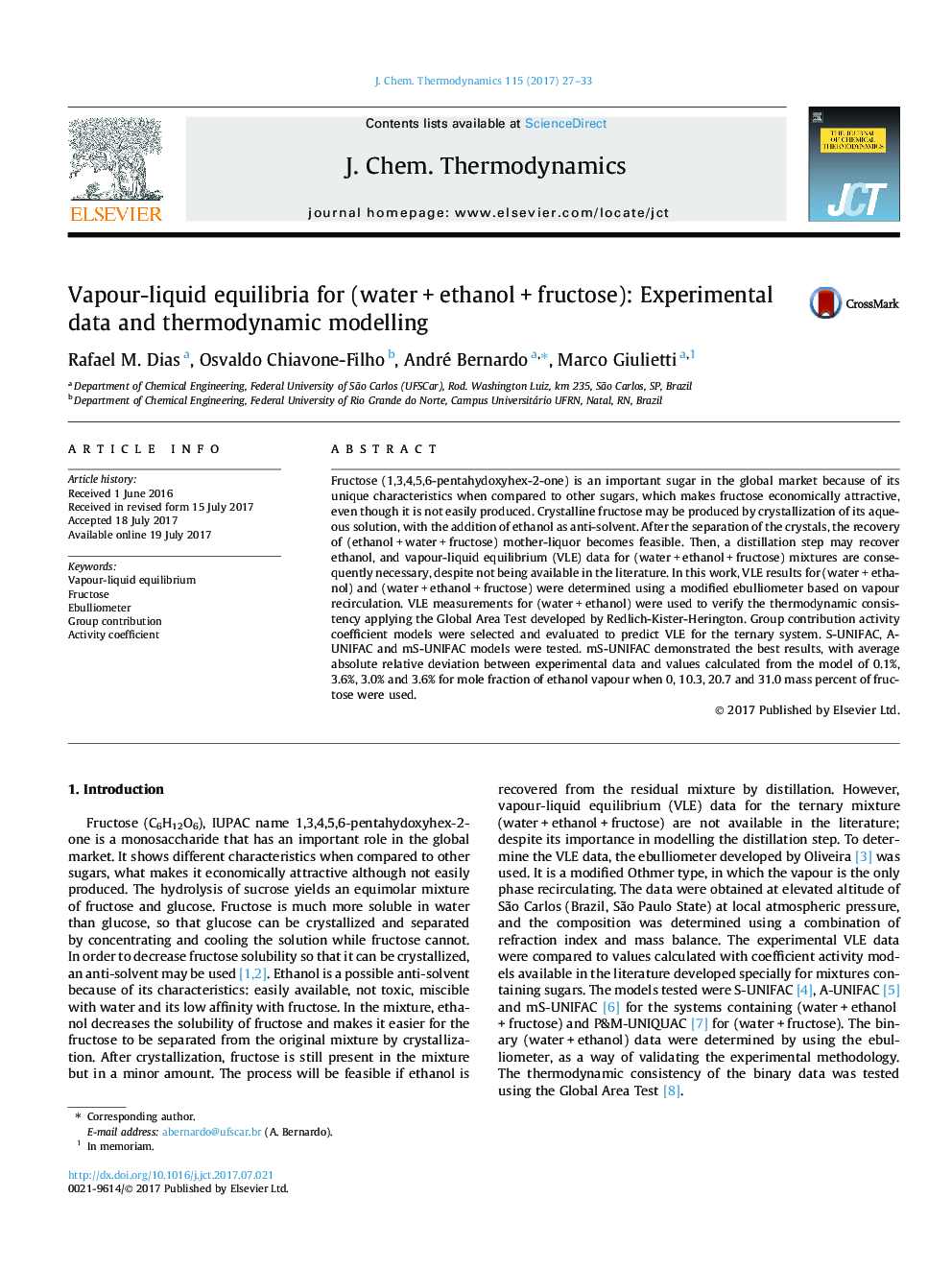| Article ID | Journal | Published Year | Pages | File Type |
|---|---|---|---|---|
| 4907276 | The Journal of Chemical Thermodynamics | 2017 | 7 Pages |
Abstract
Fructose (1,3,4,5,6-pentahydoxyhex-2-one) is an important sugar in the global market because of its unique characteristics when compared to other sugars, which makes fructose economically attractive, even though it is not easily produced. Crystalline fructose may be produced by crystallization of its aqueous solution, with the addition of ethanol as anti-solvent. After the separation of the crystals, the recovery of (ethanol + water + fructose) mother-liquor becomes feasible. Then, a distillation step may recover ethanol, and vapour-liquid equilibrium (VLE) data for (water + ethanol + fructose) mixtures are consequently necessary, despite not being available in the literature. In this work, VLE results for (water + ethanol) and (water + ethanol + fructose) were determined using a modified ebulliometer based on vapour recirculation. VLE measurements for (water + ethanol) were used to verify the thermodynamic consistency applying the Global Area Test developed by Redlich-Kister-Herington. Group contribution activity coefficient models were selected and evaluated to predict VLE for the ternary system. S-UNIFAC, A-UNIFAC and mS-UNIFAC models were tested. mS-UNIFAC demonstrated the best results, with average absolute relative deviation between experimental data and values calculated from the model of 0.1%, 3.6%, 3.0% and 3.6% for mole fraction of ethanol vapour when 0, 10.3, 20.7 and 31.0 mass percent of fructose were used.
Related Topics
Physical Sciences and Engineering
Chemical Engineering
Chemical Engineering (General)
Authors
Rafael M. Dias, Osvaldo Chiavone-Filho, André Bernardo, Marco Giulietti,
